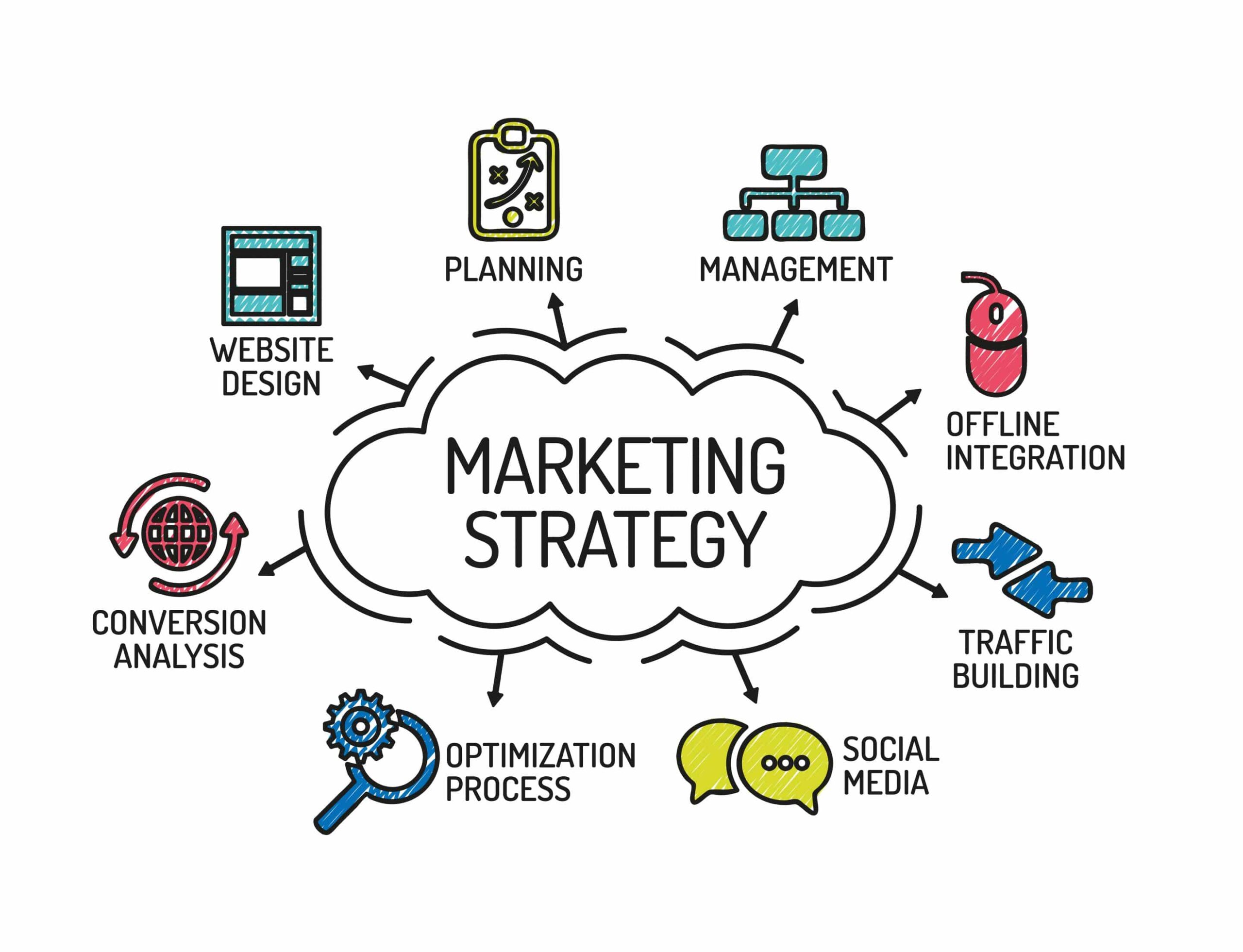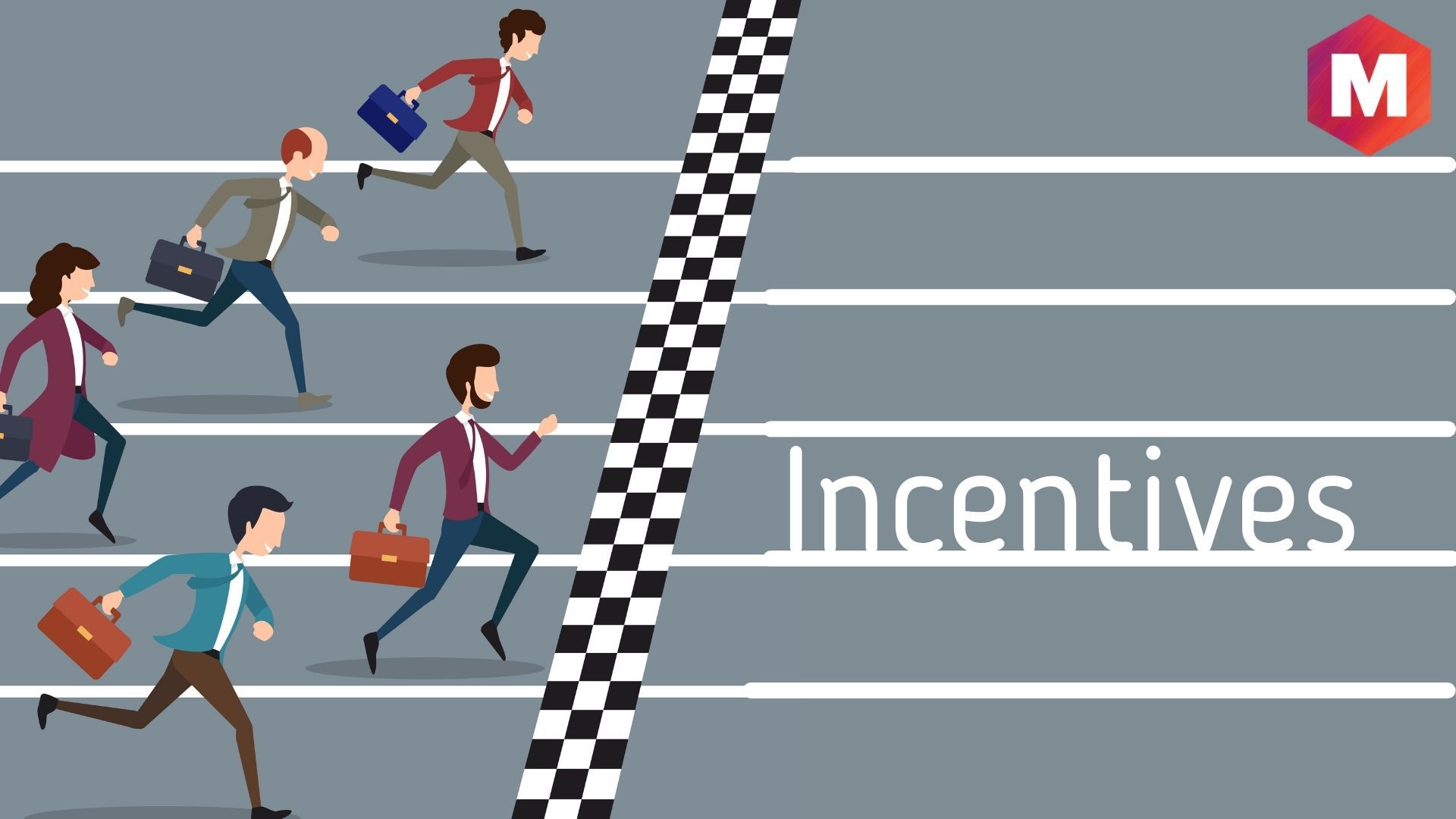Unlock Growth: The Power Of Marketing Incentives Explained
In today's fiercely competitive business landscape, capturing attention, fostering loyalty, and driving desired actions from customers, employees, and partners is paramount. This is where the strategic application of marketing incentive programs becomes not just beneficial, but absolutely essential for sustainable growth. It’s a powerful tool that, when wielded correctly, can transform lukewarm interest into fervent engagement and translate objectives into tangible results.
From boosting sales figures to cultivating long-term customer relationships and even motivating internal teams, marketing incentives are the catalysts that bridge the gap between aspiration and achievement. Understanding their mechanics, diverse forms, and the nuanced art of their implementation is crucial for any business aiming to thrive in the modern market.
Table of Contents
- What Exactly Are Marketing Incentives?
- Why Marketing Incentives Matter: The Strategic Imperative
- Types of Marketing Incentives: A Diverse Toolkit
- Crafting an Effective Incentive Program: Key Considerations
- Measuring Success: Proving the ROI of Your Incentives
- Navigating Challenges in the Incentive Landscape
- The Future of Marketing Incentives: Trends and Innovations
- Partnering for Success: Leveraging Industry Professionals
What Exactly Are Marketing Incentives?
At its core, a marketing incentive is a reward or benefit offered to individuals or groups to encourage a specific behavior or action that aligns with a business objective. It’s a powerful psychological tool that taps into human motivation, leveraging the desire for gain or recognition to influence decisions.
- Ullu Web Series Adult
- Vegamovies Is
- Movierulz Kannada Movie 2025
- 300 Mb Movie Download
- Hdhub4u Movie Download In Hindi
According to Incentive magazine, an authority in the field, an incentive program is defined as "a planned activity designed to motivate people to achieve predetermined organizational objectives." Simply put, it's a strategic offering – be it a discount, a free gift, a travel experience, or points that can be redeemed for merchandise – designed to spur a desired response. This response could be anything from making a purchase, referring a new customer, completing a survey, or exceeding sales targets.
These programs are far more sophisticated than simple price reductions. They are carefully constructed to align with broader marketing strategies, aiming not just for immediate transactions but often for long-term behavioral changes and relationship building. The key differentiator is the planned nature and the clear objective behind the offering, making it a deliberate investment in achieving specific business outcomes.
Why Marketing Incentives Matter: The Strategic Imperative
The strategic value of marketing incentives extends far beyond a temporary boost in sales. They are integral to building robust business models and fostering sustainable growth. In a world saturated with choices and information, incentives provide that extra nudge, that compelling reason for someone to choose your brand over a competitor's.
The impact of well-executed marketing incentive programs can be seen across various facets of a business, from enhancing customer engagement to supercharging employee performance. They serve as tangible expressions of appreciation, driving both external and internal stakeholders towards shared goals.
Driving Sales & Customer Loyalty
Perhaps the most immediate and visible benefit of marketing incentives is their ability to stimulate sales. Whether it's a limited-time offer, a tiered discount for higher spending, or a bonus for early adoption, incentives create a sense of urgency and value that can convert prospects into customers. Beyond the initial transaction, however, lies the profound potential for building lasting customer loyalty.
Loyalty programs, which are a prime example of sustained marketing incentive strategies, reward repeat business, turning one-time buyers into brand advocates. By offering points, exclusive access, or personalized rewards, companies can significantly increase customer lifetime value. This strategy not only retains existing customers, who are typically more cost-effective to serve than acquiring new ones, but also encourages word-of-mouth referrals, further expanding the customer base organically. It's an opportunity for your company to build brand awareness with the industry’s top incentive, recognition, and loyalty professionals, showcasing your commitment to rewarding valuable relationships.
Boosting Employee Engagement
While often associated with external marketing, incentives play a critical role in internal marketing and employee motivation. Sales teams, customer service representatives, and even entire departments can be incentivized to meet or exceed performance metrics. These internal programs, often referred to as recognition or reward programs, are powerful motivators that drive productivity, improve morale, and reduce turnover.
When employees are recognized and rewarded for their contributions, they feel valued, leading to increased job satisfaction and a stronger commitment to organizational objectives. This directly impacts customer experience, as motivated employees are more likely to deliver exceptional service. The synergy between external and internal incentive programs creates a holistic approach to achieving business success, where every stakeholder is aligned and motivated.
Types of Marketing Incentives: A Diverse Toolkit
The world of marketing incentives is incredibly diverse, offering a wide array of options to suit different objectives, budgets, and target audiences. Choosing the right type of incentive is crucial for maximizing impact and ensuring relevance.
- Merchandise & Gift Cards: These are classic choices, offering tangible rewards that recipients can choose themselves. Gift cards provide flexibility, while curated merchandise can reinforce brand identity or align with specific interests.
- Travel Experiences: Often considered the pinnacle of incentive rewards, travel programs offer unforgettable experiences that motivate high performance. These range from luxury trips for top sales performers to group travel for team-building exercises. While bookings aren’t as robust as they were last fall, optimism for incentives is high, and most concerns regarding factors that could impact trips, including increased costs and tightened budgets, are being proactively addressed by industry players.
- Points Programs: Highly flexible, points-based systems allow participants to accumulate points over time and redeem them for a variety of rewards from a catalog. This encourages sustained engagement and allows for personalization of rewards.
- Discounts & Rebates: Direct financial incentives that reduce the cost of a product or service, encouraging immediate purchase or higher volume buying.
- Experiential Rewards: Beyond travel, these could include tickets to exclusive events, celebrity meet-and-greets, or unique learning opportunities. These create memorable moments and strong emotional connections.
- Gamification: Integrating game-like elements into marketing or training programs, where points, badges, leaderboards, and virtual rewards motivate participation and achievement.
- Charitable Donations: Appealing to a sense of social responsibility, some programs allow participants to direct a donation to a charity of their choice, making the reward feel meaningful and impactful.
The choice of incentive should always be aligned with the target audience's preferences and the specific behavior you aim to encourage. A deep understanding of your audience is key to selecting an incentive that truly resonates and motivates.
Crafting an Effective Incentive Program: Key Considerations
Launching a successful marketing incentive program requires meticulous planning and a clear understanding of your objectives. It's not simply about giving away rewards; it's about designing a system that strategically influences behavior and delivers measurable returns. A haphazard approach can lead to wasted resources and diluted impact.
Setting Clear Objectives and Metrics
Before selecting any incentive, define what you want to achieve. Are you aiming to increase sales by 15%? Improve customer retention by 10%? Boost employee satisfaction scores? Each objective will dictate the type of incentive, the target audience, and the duration of the program. Once objectives are set, establish clear, measurable metrics to track progress and evaluate success. Without these benchmarks, it's impossible to determine the true return on investment (ROI) of your marketing incentive efforts.
For instance, if the goal is to increase average order value, the incentive might be a tiered discount for spending above a certain threshold. If it's to encourage product reviews, a small gift card for submitting a verified review might be appropriate. The "what" drives the "how" and the "why."
Understanding Your Audience
Who are you trying to motivate? Customers, sales reps, channel partners? Their demographics, psychographics, and existing motivations are critical. An incentive that excites a millennial customer might not resonate with a seasoned executive. Researching preferences, conducting surveys, or analyzing past purchasing behavior can provide invaluable insights. The more personalized and relevant the incentive feels to the recipient, the more effective it will be.
For instance, a group of high-performing sales executives might be motivated by a luxurious travel experience, while a broader customer base might prefer practical gift cards or discounts. Tailoring the incentive to the specific audience is paramount to ensuring its perceived value and motivational power.
Measuring Success: Proving the ROI of Your Incentives
A crucial aspect of any marketing incentive program, especially given its impact on "Your Money or Your Life" (YMYL) business decisions, is the ability to measure its effectiveness and demonstrate a clear return on investment (ROI). Without robust measurement, incentives can become a cost center rather than a growth driver.
Key metrics to track include:
- Sales Uplift: Direct increase in revenue or units sold attributable to the incentive program.
- Customer Acquisition Cost (CAC) Reduction: How much less it costs to acquire a new customer through incentivized referrals compared to traditional advertising.
- Customer Retention Rate: The percentage of customers who continue to do business with you after participating in a loyalty incentive.
- Average Order Value (AOV): Increase in the typical amount spent per transaction.
- Employee Productivity: For internal programs, tracking improvements in sales quotas met, customer service ratings, or project completion rates.
- Brand Engagement: Metrics like website visits, social media interactions, or time spent on your platform.
Leveraging data analytics tools and CRM systems can help track these metrics effectively. Comparing performance during the incentive period against baseline data (before the program) or control groups provides a clear picture of the program's impact. This research consolidates insights from executives and companies across our field of business for industry professionals seeking a better understanding of the global landscape of incentive and recognition programs, underscoring the importance of data-driven decisions.
Navigating Challenges in the Incentive Landscape
While the benefits of marketing incentives are clear, businesses must also be prepared to navigate potential challenges. These can range from logistical complexities to ensuring the program remains fair and motivating over time.
One significant concern is cost management. Designing an attractive incentive program while staying within budget requires careful planning and negotiation with suppliers. Increased costs, especially for high-value rewards like travel, can impact the feasibility of a program. Additionally, ensuring that the incentives are perceived as equitable and achievable by all participants is vital to prevent demotivation or resentment. A poorly designed program can sometimes do more harm than good if it's seen as unfair or unattainable.
Another challenge is avoiding "gaming" the system, where participants find loopholes to gain rewards without genuinely contributing to the desired objectives. Clear rules, transparent tracking, and robust verification processes are essential to mitigate this risk. Furthermore, keeping the program fresh and exciting over time can be difficult; what motivates today might become mundane tomorrow. Regular evaluation and adaptation are key to long-term success.
The Future of Marketing Incentives: Trends and Innovations
The landscape of marketing incentives is constantly evolving, driven by technological advancements, changing consumer behaviors, and global economic shifts. Staying abreast of these trends is crucial for designing future-proof programs that continue to resonate and deliver results.
Personalization is a major trend. Moving beyond one-size-fits-all rewards, future incentive programs will leverage AI and big data to offer highly customized rewards based on individual preferences, past behavior, and demographic profiles. This makes the incentive feel more valuable and relevant to the recipient.
Digitalization and mobile integration are also key. Apps and online platforms make it easier for participants to track their progress, redeem rewards, and engage with the program on the go. Blockchain technology is even being explored for transparent and secure reward distribution.
Experiences over material goods continue to gain traction, especially among younger demographics who value unique moments over possessions. This includes not just travel but also exclusive access, learning opportunities, and personalized services.
The Role of Industry Insights and Expertise
Understanding these trends is greatly aided by industry research and expert insights. Reports like the "Incentive & Recognition Insights 2025" are invaluable resources. This report synthesizes insights from over 600 executives worldwide, offering comprehensive global benchmarks and trends for incentive and recognition programs. It's built on the contributions of 650 executives and leaders across the globe, representing companies active in incentive marketing and spanning a range of served industries. Such detailed research helps businesses make informed decisions, ensuring their marketing incentive strategies are aligned with current best practices and future directions.
Partnering for Success: Leveraging Industry Professionals
Given the complexity and strategic importance of marketing incentive programs, many businesses choose to partner with specialized agencies and industry associations. These professionals bring expertise, experience, and resources that can significantly enhance the effectiveness and efficiency of incentive initiatives.
Organizations like the Incentive Marketing Association (IMA) play a crucial role in advancing the field. IMA focuses on expanding the incentive marketplace, while the IMA Strategic Industry Groups (SIGs) and IMA Chapters provide expertise and education to their respective market segments. They offer certifications, best practices, and networking opportunities that help elevate the standard of incentive program design and execution.
Working with an experienced incentive agency can provide access to a vast network of reward suppliers, program management technology, and strategic guidance on everything from program design to legal compliance. These partnerships allow businesses to focus on their core competencies while entrusting the intricacies of incentive management to experts. The Summit Awards, often presented by industry bodies, represent the best in class for incentive programs, showcasing successful strategies and inspiring innovation across the sector.
In conclusion, marketing incentives are far more than mere giveaways; they are sophisticated strategic tools capable of profoundly influencing behavior and driving significant business growth. From boosting sales and fostering customer loyalty to enhancing employee engagement, their impact is multifaceted and far-reaching. By setting clear objectives, understanding your audience, choosing the right incentives, and rigorously measuring results, businesses can unlock the full potential of these powerful motivators. Staying informed through industry insights and leveraging expert partnerships further ensures that your incentive programs are not just effective today, but also resilient and impactful in the ever-evolving market landscape. Embrace the strategic power of marketing incentives, and watch your business thrive.
What are your thoughts on the most effective marketing incentives you've encountered? Share your experiences in the comments below, or explore our other articles on strategic business growth!



Detail Author:
- Name : Mr. Edd Murray
- Username : dane.murray
- Email : rocky25@mcglynn.com
- Birthdate : 1984-08-22
- Address : 15413 Pagac Loaf North Elvie, OK 48954-2973
- Phone : +1.518.822.3797
- Company : Windler-Skiles
- Job : Court Clerk
- Bio : Dolore incidunt cum ut. Et autem eaque et vel ut. Quas eveniet tenetur eos non distinctio rerum vel.
Socials
facebook:
- url : https://facebook.com/hintzl
- username : hintzl
- bio : Nihil aspernatur sint dicta enim. Sit sunt aut inventore quos porro laudantium.
- followers : 1260
- following : 2906
twitter:
- url : https://twitter.com/lillianhintz
- username : lillianhintz
- bio : Tempore qui at dolorem hic harum. Debitis deleniti aut ipsa ea velit quia voluptates. Placeat nisi labore eveniet est commodi maiores officiis laudantium.
- followers : 1021
- following : 2980
linkedin:
- url : https://linkedin.com/in/lillian.hintz
- username : lillian.hintz
- bio : Rerum amet non laboriosam quae architecto.
- followers : 326
- following : 2695
instagram:
- url : https://instagram.com/lillianhintz
- username : lillianhintz
- bio : Eum labore qui labore. Culpa dignissimos placeat explicabo omnis voluptatem aliquid non.
- followers : 5225
- following : 2645
tiktok:
- url : https://tiktok.com/@lhintz
- username : lhintz
- bio : Reprehenderit esse voluptatem qui et ad modi numquam fugit.
- followers : 6310
- following : 1647